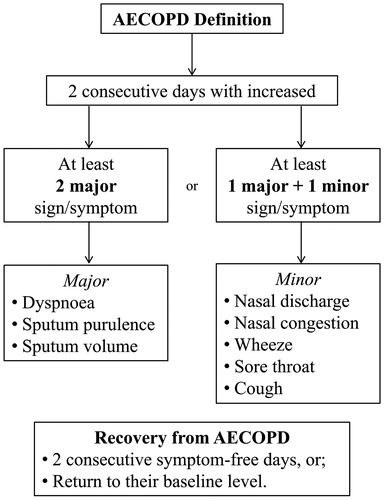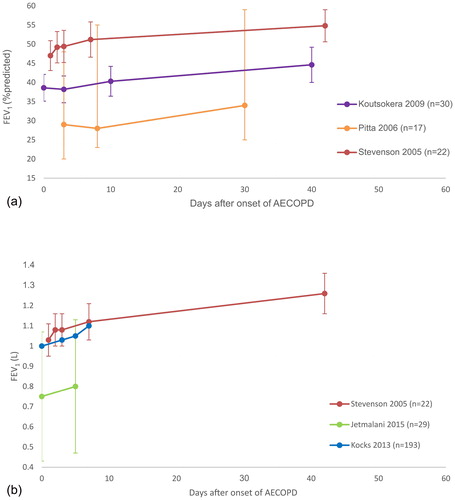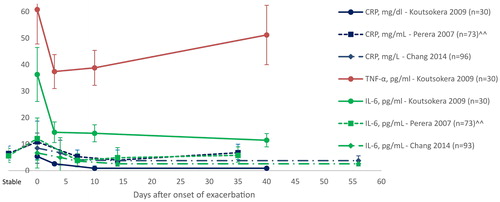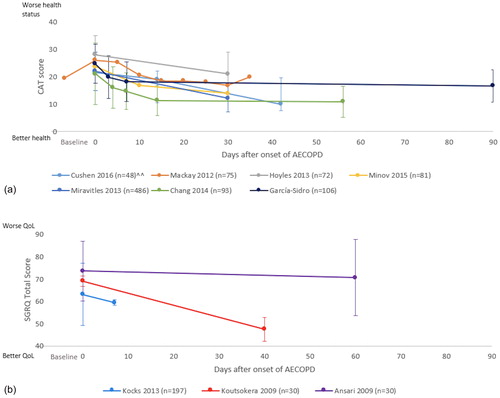Figures & data
Figure 1. Definition of acute exacerbation of COPD (AECOPD). Definition for AECOPD from Seemungal et al. (Citation3) and the definition of recovery for AECOPD from Donaldson et al. (Citation2).

Figure 2. Recovery of lung function after AECOPD. Day 0 is onset of exacerbation. Data are mean ± SD unless otherwise stated. (a) Recovery of FEV1 %predicted over time. (b) Recovery of FEV1 (L) over time. FEV1 = forced expiratory volume in one second; AECOPD = acute exacerbation of chronic obstructive pulmonary disease; n = number of participants; L = litres; %predicted = percentage of predicted normal.
Note: Data from Jetmalani et al. (Citation74) are a combination of the means and SD from two groups presented in the study (Citation75). Data from Kocks et al. (Citation46) were derived from the graph, there is no SD.

Figure 3. Recovery of systemic inflammatory markers over time. Day 0 is onset of exacerbation. Data are mean ± SD, unless otherwise stated. CRP = C-reactive protein; IL-6 = interleukin-6; TNF-α = tumour necrosis factor-alpha; AECOPD = acute exacerbation of chronic obstructive pulmonary disease; pg = picograms; ml = millilitre; mg = milligram; dl = decilitre; n= number of participants. ^^data presented as median.

Table 1. Symptoms recovery in days and tools used for assessment.
Figure 4. Recovery of health-related quality of life during following AECOPD. Baseline indicates pre-exacerbation data. Day 0 is onset of exacerbation. Data expressed as mean ± SD unless otherwise stated. (a) Demonstrates the recovery curve measured by CAT score. (b) Demonstrates the recovery curve measured by SRGQ score.
SGRQ score = Saint George’s Respiratory Questionnaire; CAT score = chronic obstructive pulmonary disease assessment test score; AECOPD = acute exacerbation of chronic obstructive pulmonary disease; n = number of participants; QoL: Quality of life.
Note: Ansari et al. (Citation47) presented only results from the hospitalised participants group. Data from Kocks et al. (Citation46), Mackay et al. (Citation39) and Chang et al. (Citation23) were extracted from the graph.

Table 2. Factors associated with prolonged recovery from an AECOPD.
